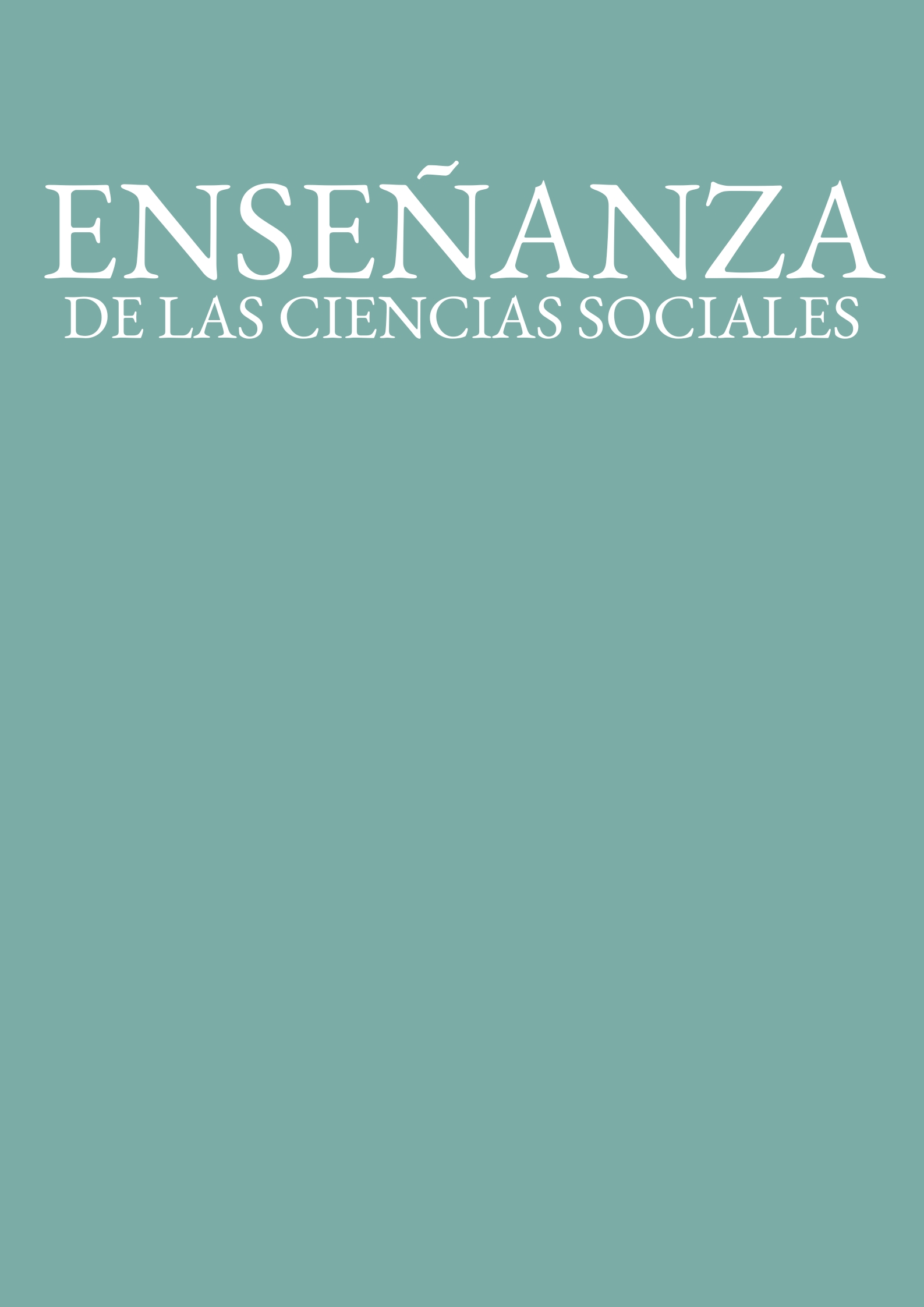From Kiev to Weimar: the use of the retrospective method for learning Contemporary history (2022-1919)
DOI:
https://doi.org/10.1344/ECCSS2023.21.3Keywords:
retrospective method, active methodologies, TILC, educational competence approach, Russian invasion of UkraineAbstract
Following the Russian invasion of Ukraine on February 24, 2022, the authors of this article decided to rethink their syllabus and designed as well as implemented a project titled "From Kiev to Weimar: a reverse chronology of the contemporary world (2022-1919)”. The project aims at the acquisition of a global vision of the contemporary world, the use of historical knowledge to argue ideas and review them critically and the development of critical and creative thinking for analysing relevant social problems. As regards the methodology, it revolves around three key elements: the application of the retrospective method, the integrated language and content approach (TILC) and the use of active methodologies. The project is, therefore, aligned with the guidelines established in both the LOMLOE and the new Catalan curriculum. This work, still in its implementation stage, has presented two difficulties so far: on the one hand, it has faced some students’ struggle against a methodology not based on the chronological presentation of facts for their memorization. On the other hand, the project requires a vast amount of effort by teachers to program and carefully plan all the tasks. However, these difficulties have been overcome by the degree of participation and motivation awakened in the classroom, which has become a much more participatory space, open to debate and opinion.
References
ARENDT, H. (2006). Los orígenes del totalitarismo. Alianza.
ARONSON, E. (1978). The jigsaw classroom. Sage.
BLOCH, M. (1957). Introducción a la historia. Fondo de Cultura Económica.
CANALS, R. (2007). La argumentación en el aprendizaje del conocimiento social. Ense- ñanza de las Ciencias Sociales,6, 49-60.
CASAS, M.; BOSCH, D. Y GONZÁLEZ-MONFORT, (2005). Competencias comunicativas en la formación democrática de los jóvenes: describir, explicar, justificar, interpretar y argumentar. Enseñanza de las Ciencias Sociales, 4, 39-52.
CHIVA, O. Y MARTÍ, M. (2016). Métodos pedagógicos activos y globalizadores. Graó.
DECRET 171/2022, de 20 de setembre, d’ordenació dels ensenyaments de batxillerat. Di- ari Oficial de la Generalitat de Catalunya, 8758, de 22 de septiembre de 2022. Eli/es- ct/d/2022/09/20/171/dof
DIBURZI, N., MILIA, L. Y SCARAFÍA, I. (2006). El método retrospectivo en la enseñanza de la Historia. Algunas reflexiones a partir del compromiso docente de Susana Simián de Molinas. Clio & Asociados, 9-10, 103-115.
FUKUYAMA, FRANCIS. (1992). El fin de la historia y el último hombre. Silex.
GALLEGO, F. (2006). De Múnich a Auschwitz. Ensayo.
HILLMANN, KARL-HEINZ. (2005). Diccionario enciclopédico de Sociología. Herder.
LEY ORGÁNICA 3/2020, de 29 de diciembre, por la que se modifica la Ley Orgánica 2/2006, de 3 de mayo, de Educación. Boletín Oficial del Estado, 340, de 30 de diciembre de 2020. https://www.boe.es/eli/es/lo/2020/12/29/3
LLUSÀ I SERRA, JUAN. (2015). Ensenyar historia des de la contemporaneïtat. Estudi de cas sobre la construcción del concepte contemporaneïtat a l’ESO. Universitat Autònoma de Barce- lona. Departament de Didàctica de la Llengua, de la Literatura i de les Ciències Socials.
MENDO, CARLOS. (1989). El fin de la historia. El País. Recuperado a partir de https://el- pais.com/diario/1989/08/31/opinion/620517611_850215.html
OCAÑA, J. (2005). Historiasiglo20.org. El sitio web de la historia del siglo XX. Recuperado el 12 de octubre de 2022, de http://www.historiasiglo20.org
PAYERAS, MIQUEL. (2022). La recuperació de la Guerra Freda. El Temps, 1970, 32-34. PERRENOUD, P. (2004). Diez nuevas competencias para enseñar. Graó.
SANTISTEBAN, A. (2019). La enseñanza de las Ciencias Sociales a partir de problemas sociales o temas controvertidos. Estado de la cuestión y resultados de una investigación. El Futuro del Pasado: revista electrónica de historia. 10, 57-79.
SERA, MARINA. (2022). El ataque ruso y el abuso de la acusación de nazismo como arma de propaganda. SWI Swissinfo.ch. Recuperado a partir de https://www.swis- sinfo.ch/spa/ucrania-guerra-historia_el-ataque-ruso-y-el-abuso-de-la-acu- saci%C3%B3n-de-nazismo-como-arma-de-propaganda/47490754
SIMIAN DE MOLINAS, S. (1970). El método retrospectivo en la enseñanza de la Historia. Án- gel Estrada y Cía.
TOTALITARISME | enciclopedia.cat. (s. f.). Enciclopedia.cat. Recuperado el 12 de octu- bre de 2022, de https://www.enciclopedia.cat/gran-enciclopedia-catalana/totalitarisme
XTEC. (s.f.). Tractament Integrat de Llengua i Contingut (TILC). xtec.gencat.cat. Recupe- rado el 16 de octubre de 2022, de https://xtec.gencat.cat/ca/projectes/plurilin- guisme/metodologies/tilc
VILAR, P. (1994). Introducció a la història de Catalunya. Edicions 62. ZABALA, A. (1999). Enfocament globalitzador i pensament complex. Graó.
Downloads
Published
Issue
Section
License
Copyright (c) 2023 David Carbonell Gou, Ernest Parellada Torres

This work is licensed under a Creative Commons Attribution-NonCommercial-NoDerivatives 4.0 International License.
Authors who have publications with this journal accept the following terms:
Authors will retain their copyright and grant the journal the right of first publication of their work. From 2024 onwards, the reuse of the works can be done under the terms of the Creative Commons Attribution-NonCommercial-ShareAlike 4.0 International license. Publications until 2023 are subject to the Creative Commons Attribution-NonCommercial-NoDerivatives 4.0 license.
Authors are able to enter into separate, additional contractual arrangements for the non-exclusive distribution of the journal's published version of the work (e.g., post it to an institutional repository or publish it in a book), with an acknowledgment of its initial publication in this journal.
Authors are permitted and encouraged to post their work online (e.g., in institutional repositories or on their website) prior to and during the submission process, as it can lead to productive exchanges and earlier and greater citation of published work.


